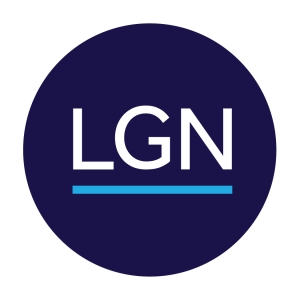U.S. Senate leadership late on Monday unveiled a draft plan to provide $1 trillion in coronavirus relief funding ahead of negotiations with House leaders. As a package of separate bills, the plan gives Congress the option of passing parts of the agenda now, such as extensions of unemployment insurance or public health funding, and leaving the rest for later.
The majority caucus in the Senate had been divided on the overall cost of the plan and how to extend the supplemental unemployment benefits expiring this week. Congressional Democrats, backing their own $3.5 trillion HEROES Act passed in the House in May, have signaled that negotiations would begin once the GOP had united around their own plan.
Notably, the Senate plan does not include any additional funding for state and local governments, a top priority for House leadership and Senate Democrats. The House-passed HEROES Act included $500 billion for states and $375 billion for local governments.
However, the bill would expand the allowable use of the CARES Act’s Coronavirus Relief Fund (CRF) by extending funds for use beyond the end of 2020 to 90 days after the end of a state or localities’ fiscal year 2021 date, as well as permitting states and local governments to use CRF funding to cover revenue shortfalls incurred in fiscal years 2020 and 2021, subject to a limit of 25 percent of relief funds.
Negotiations are expected to continue throughout the week ahead of the coming August recess, scheduled to begin the week of August 10. It is expected that negotiations will center largely on local government funding, liability protections, and tax issues, and will be held among leaders in both chambers and the administration.
Details of the newly-released Senate legislation can be found below:
Unemployment Insurance
Pandemic-related federal supplemental unemployment benefits for millions of people in the U.S. began running out on Saturday, July 25. The Senate plan extends the added benefits at a rate lower than the $600 per week enacted as part of the CARES Act in March.
For two months, the benefits would be set at $200 per week on top of state-level benefits, which vary. After that, states would provide benefits equal to 70% of previous wages, with the federal supplement additionally capped at $500 per week. States would be allowed to apply for a waiver to secure up to two additional months to transition to the new calculation.
Senate Democrats have proposed extending the $600 benefit through March until a possible reduction to state unemployment rates. The House-passed HEROES Act would extend the benefit into January.
Direct Payments
The legislation includes a second set of stimulus payments, structured the same way as the first round in March. The plan provides $1,200 payments at individual incomes of $75,000 or less a year, with $500 in benefits for each child or adult dependent.
Liability Protections
Liability protections have been a top priority for Senate Majority Leader Mitch McConnell. The bill shields businesses, schools, charities, and other organizations from Covid-19-related lawsuits through October 1, 2024, as long as they make “reasonable” efforts to follow public health guidelines and don’t commit acts of “gross negligence” or “intentional misconduct,” according to the summary.
The proposal would move medical liability claims against caregivers that arise from virus-related care provided by licensed health care facilities and medical workers to federal courts. Like employers generally, they could only be successfully sued if they engaged in gross negligence and intentional misconduct. Federal courts could decide such matters as the burden of proof by a claimant or any caps on damages.
Small Business Loans
The plan would extend the Paycheck Protection Program of forgivable small business loans, adding $60 billion to a program that still has $130 billion left from the last stimulus. Small businesses with fewer than 300 employees that can show revenue losses of 50% or more since the pandemic began would be able to apply for second PPP loans.
The plan has $100 billion in long-term, low-cost loans to “recovery sector” businesses, such as seasonal businesses and those located in low-income areas. These small businesses must demonstrate at least a 50 percent reduction in revenues.
Hiring Tax Credit
The legislation includes an expanded version of the employee retention tax credit for businesses that keep workers on their payrolls. The break gives companies an additional incentive to keep people employed as many firms still face revenue downturns but have run out of Paycheck Protection Program money or never qualified for it.
The credit, which has broad bipartisan backing, is refundable against payroll tax liability, meaning that companies could get a check back from the IRS if they qualify for a larger tax break than the payroll taxes they owe. The legislation also expands a tax credit for large businesses to hire individuals who are unemployed.
Health Care
The White House dropped its initial opposition to new testing money in the bill and agreed to go along with a plan for $16 billion to help states ramp up tests and contact tracing.
Education Funding
The plan would provide $105 billion, with $70 billion going to elementary, middle and high schools; $29 billion for colleges and universities and $5 billion to a flexible fund. Two-thirds of the money would go to schools that institute reopening plans and the rest to schools generally, under existing federal formulas.
Operating-During-a-Pandemic Tax Break
The plan includes tax credits for the increased costs that businesses are facing to shield workers and customers against the virus. It includes a credit to cover some of what companies spend on testing, personal protective equipment, workplace cleaning, and retrofitting facilities to adhere to distancing guidelines.
Protective Equipment
The plan is proposing to end dependence on foreign manufacturers for personal protective equipment. The plan, developed by Senator Lindsey Graham of South Carolina, would create tax credits to spur manufacturing to help the federal government reach the goal of 100% domestic sourcing of PPE within five years.
